Knowing how much your competitors spend on paid ads and where their ads show is invaluable information for your marketing strategy.
In this post, we’ll go through various tools you can use to find your competitor's ads and analyze their advertising strategies.
You’ll learn how to see your competitor’s PPC Ads, Facebook Ads, TikTok Ads, and Display Ads.
1. How To Find Your Competitor’s Display Ads
One of the tools you can use to analyze your competitors’ digital campaigns is AdClarity, Semrush App Center’s Advertising Intelligence App.
With AdClarity, you can see exactly where your competitor's ads appear and how much they spend for each campaign.
It covers display ads (Google display network, mobile apps, direct ads), social (all major social networks), and YouTube.
Let’s see step-by-step how to analyze your competitor's display campaigns. You can register for a 7-day free trial to follow our examples and do your own advertising research.
In this scenario, we’ll analyze Coursera - an online learning platform selling courses and certifications.
Login to Semrush App Center’s Advertising Intelligence App. Enter the advertiser URL and select channel, period, and region.

As soon as you hit submit, you can see, at a glance, their estimated expenditure, the number of impressions their display campaigns received in the last 3 months, the type of ads, and the ad buying methods.

Scrolling down, you can see a breakdown of the advertising budget per channel.
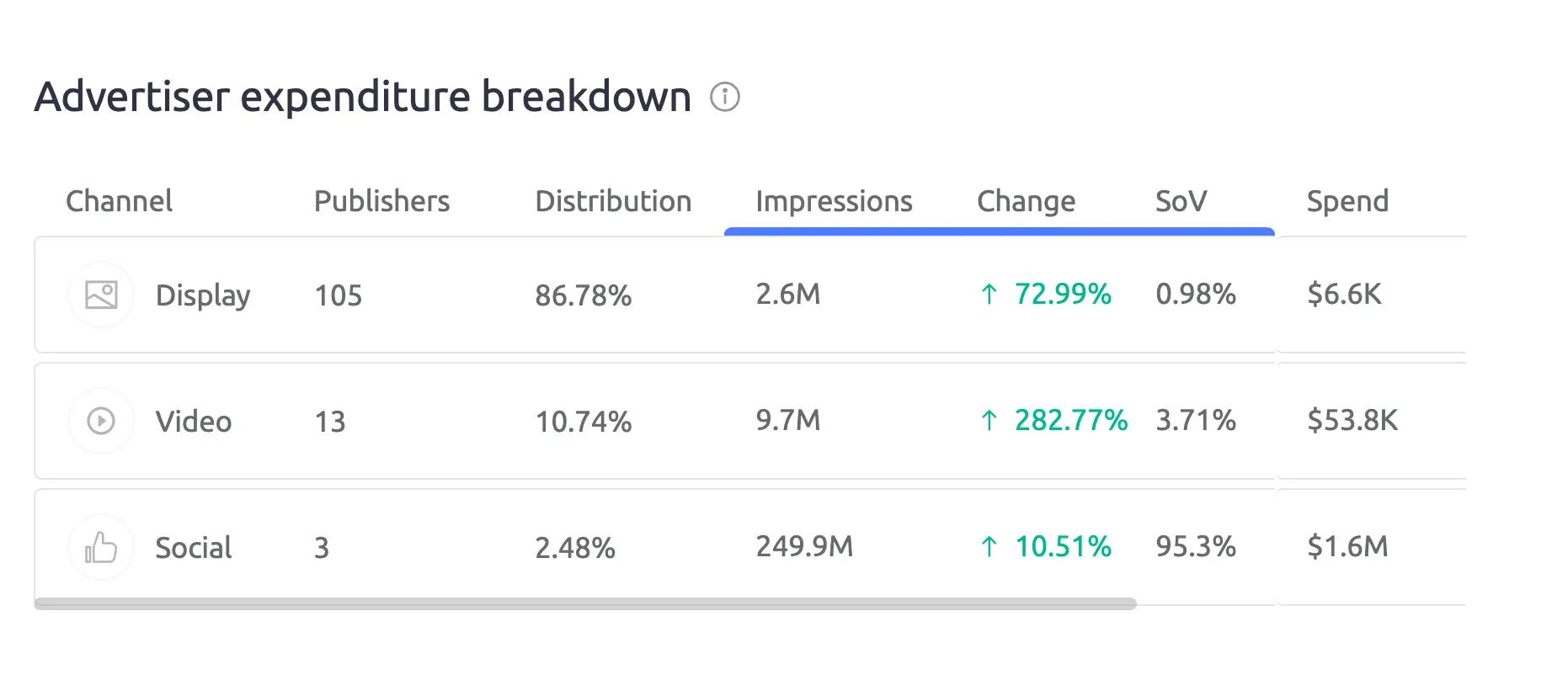
Scrolling further down, you can explore many details of their top ads, including when the campaign started, where the ads were shown, total spending, and impressions.
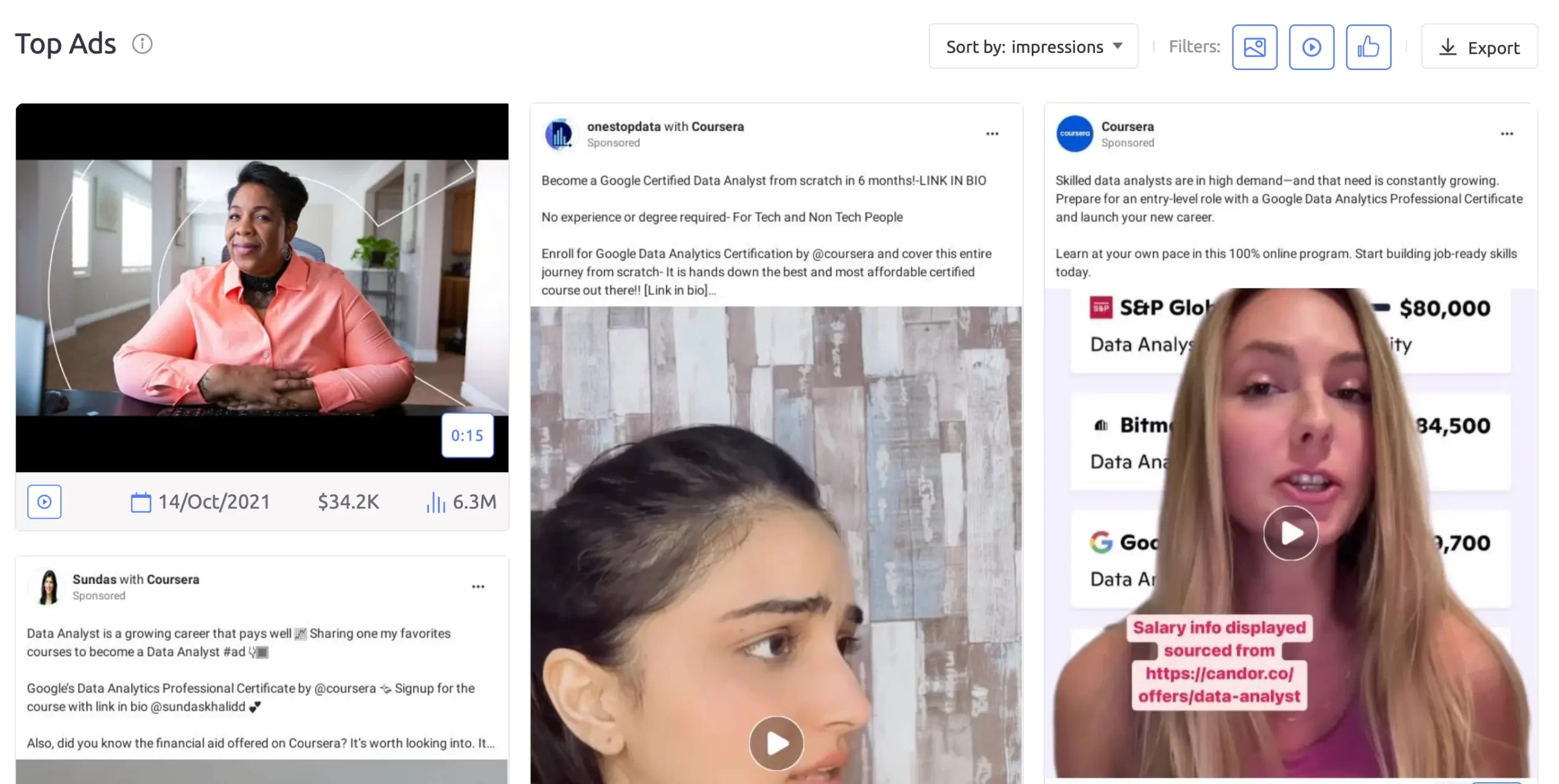
Going further down, you can see all their advertising campaigns. Clicking on a campaign will give you specific information.
This is very helpful if you want to see how much your competitors spend on advertising a specific product or service.
For example, we can see that for promoting the Google Data Analytics Professional Certificate, Coursera has spent more than $50K on paid ads so far.

Most of the money was allocated to Facebook, Instagram, and YouTube.

Semrush App Center’s Advertising Intelligence App is really a powerful tool for analyzing and comparing any company's advertising campaigns.
The information you get is priceless. You can see which channels provide the most traffic & conversions, which products they promote, and the exact ad copies they use.
We use AdClarity to design effective paid campaigns for our clients, get ideas on what type of ads to use, and allocate a budget between the different channels.
2. How To Find Your Competitors’ Google Ads
No competitor analysis is complete without finding what campaigns they are running in paid search and, in particular, Google.
There are various tools you can use for this task. In this tutorial, we’ll use Semrush and Serpstat.
Let’s see how to do this in Semrush. If you don’t have an account, you can register for a free account and test the tool for 14 days.
Login to Semrush and select Advertising Research (under Advertising) from the left menu.
Enter your competitor’s domain, select the country, and click Search.
You can see at a glance the total number of keywords they are targeting, estimated traffic levels, and cost.
Click on the All Time button to view a graph showing how their traffic, keywords, and cost changed over time.
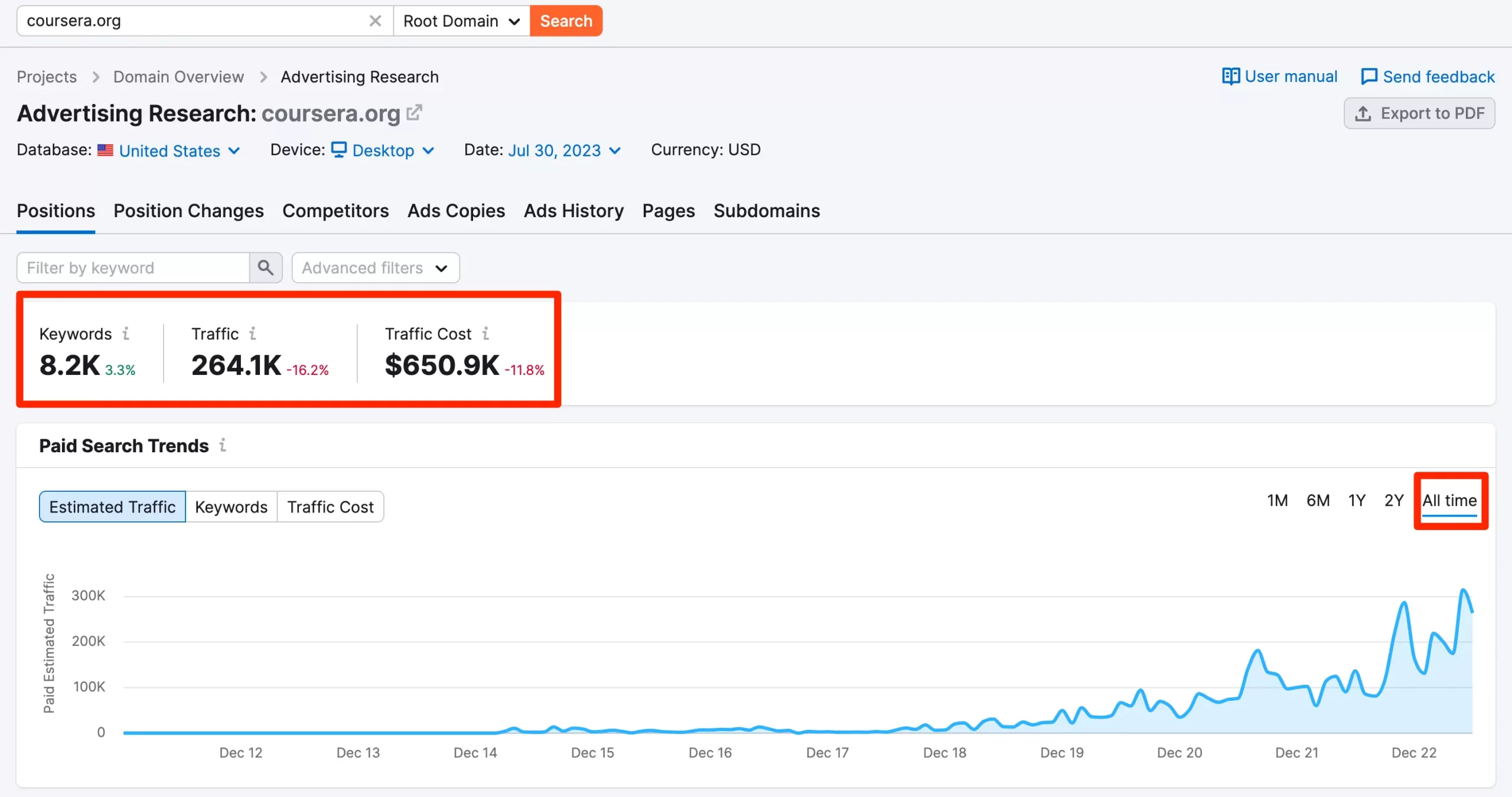
Scroll down to see the keywords they are bidding on, their ad position, search volume, average cost per click, and landing page URL.
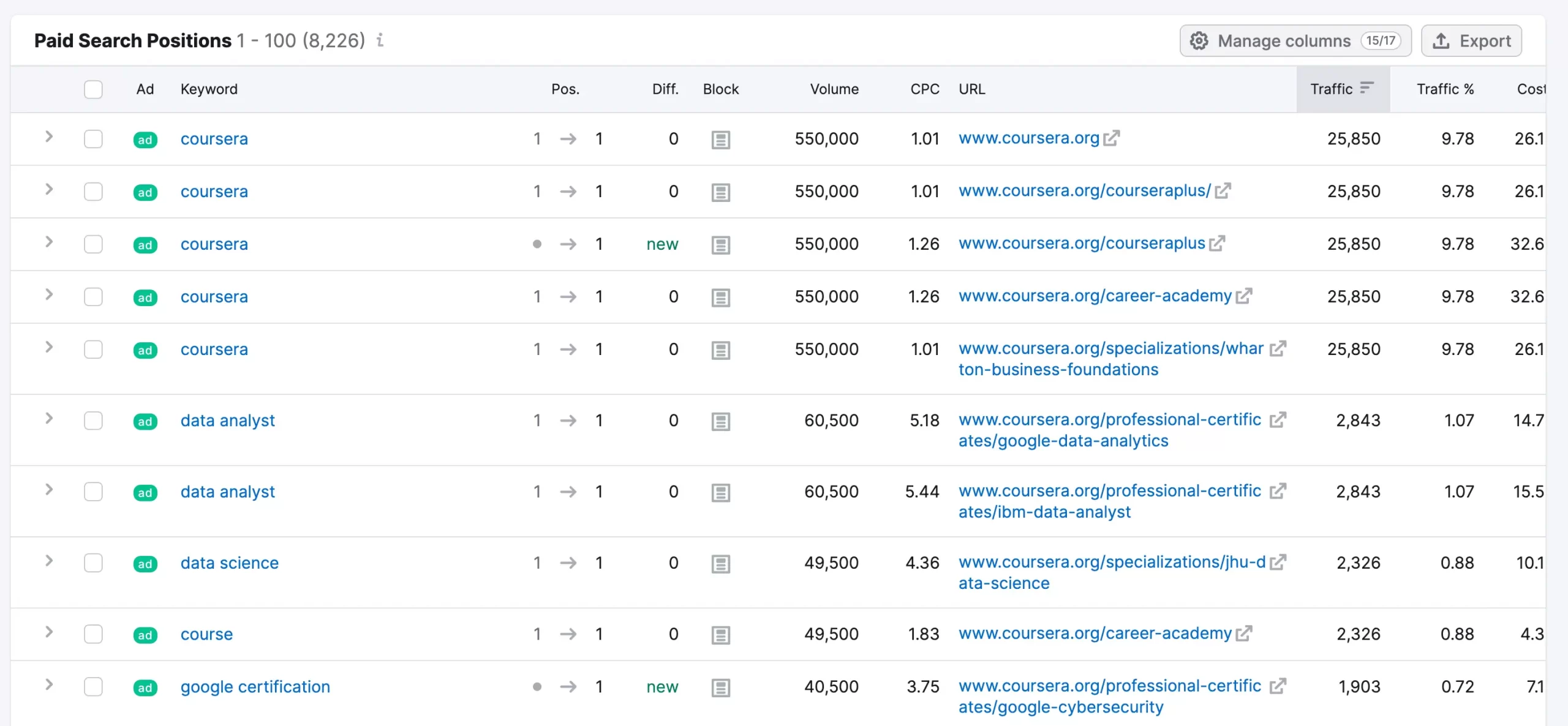
To see exactly which products they are promoting, you can remove brand keywords (containing the business name) using the Advanced Filters on top.

The report now makes more sense, showing all the non-branded keywords they are using in their paid search campaigns.

You can click on any keyword to see other companies bidding for this keyword, including their ads traffic, cost, and total keywords.
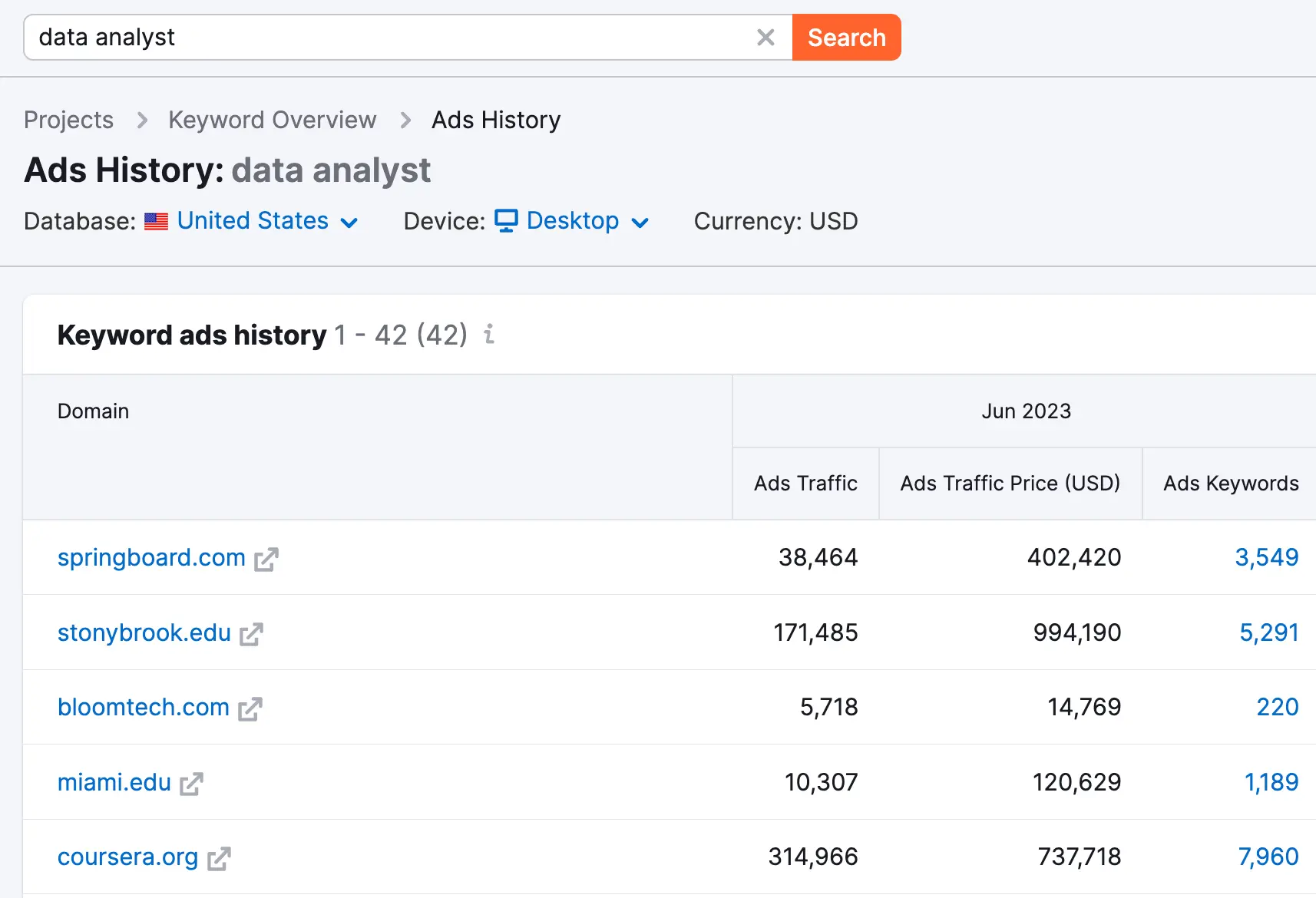
You can also click the Ads Copies tab and see the exact ads they use in their campaigns. You can use the top filters to find ads targeting specific keywords or landing pages.
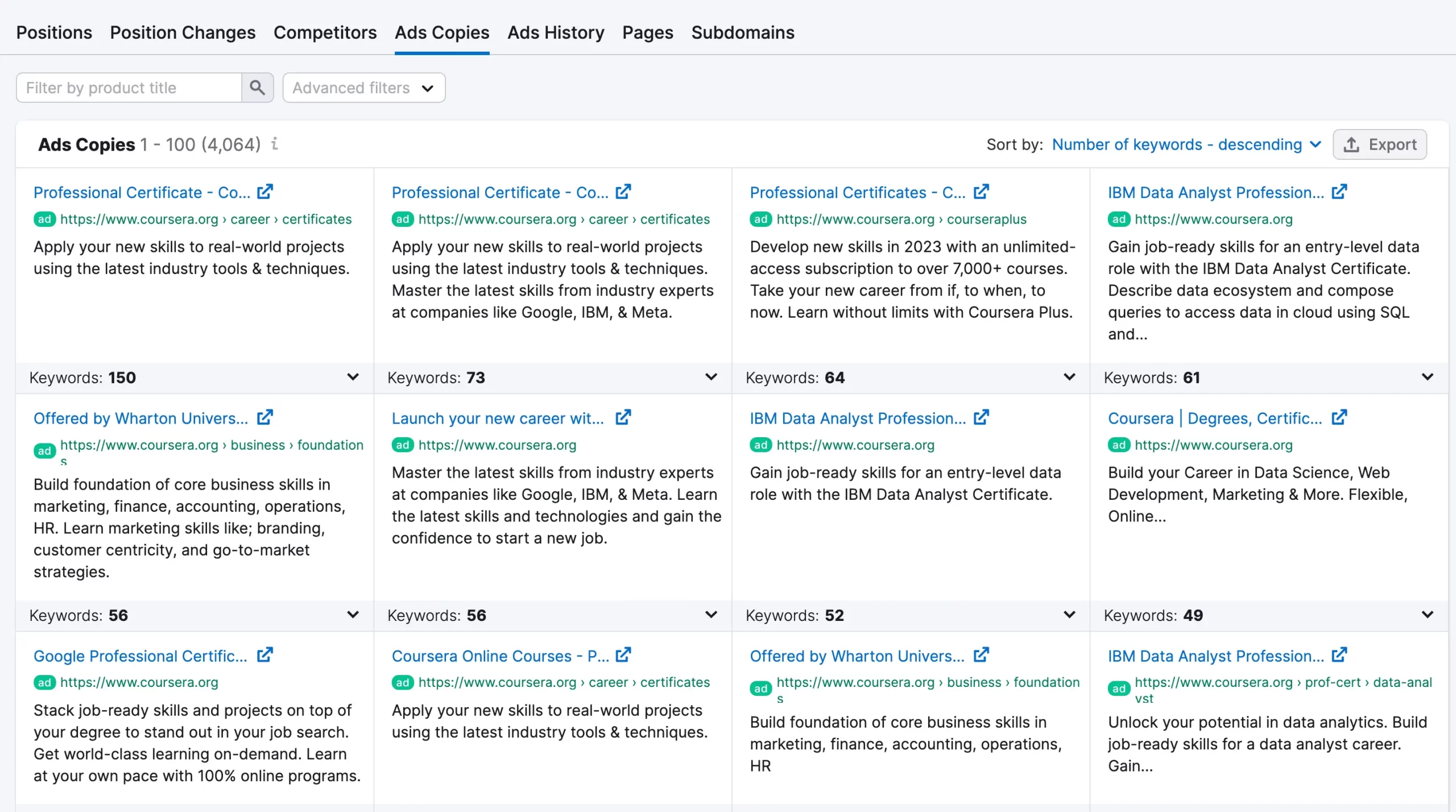
Click on the Pages report to analyze the landing pages they use in their ads. You can examine if they use dedicated landing pages, the type of content, call-to-action buttons, and other useful information you can use in your campaigns.

Overall, with the Semrush advertising research tool, you can get a lot of information about your competitor’s ads, including historical information that can help you identify what’s working for them consistently.
Try Semrush Advertising Research
The second tool you can use for PPC competitor analysis is Serpstat. It’s a very good platform offering all the tools you need to manage your SEO and PPC needs in the same tool.
You can register for free and test Serpstat for 7 days before committing to a paid plan.
Log in to Serpstat and select Domain Analysis from the left menu.
Click on Keywords under PPC Research.
Enter your competitor's URL in the search box and click search.
You’ll get a report showing the keywords used in the PPC campaigns, the number of ads related to those keywords, related landing pages, kw difficulty and PPC ranking position.
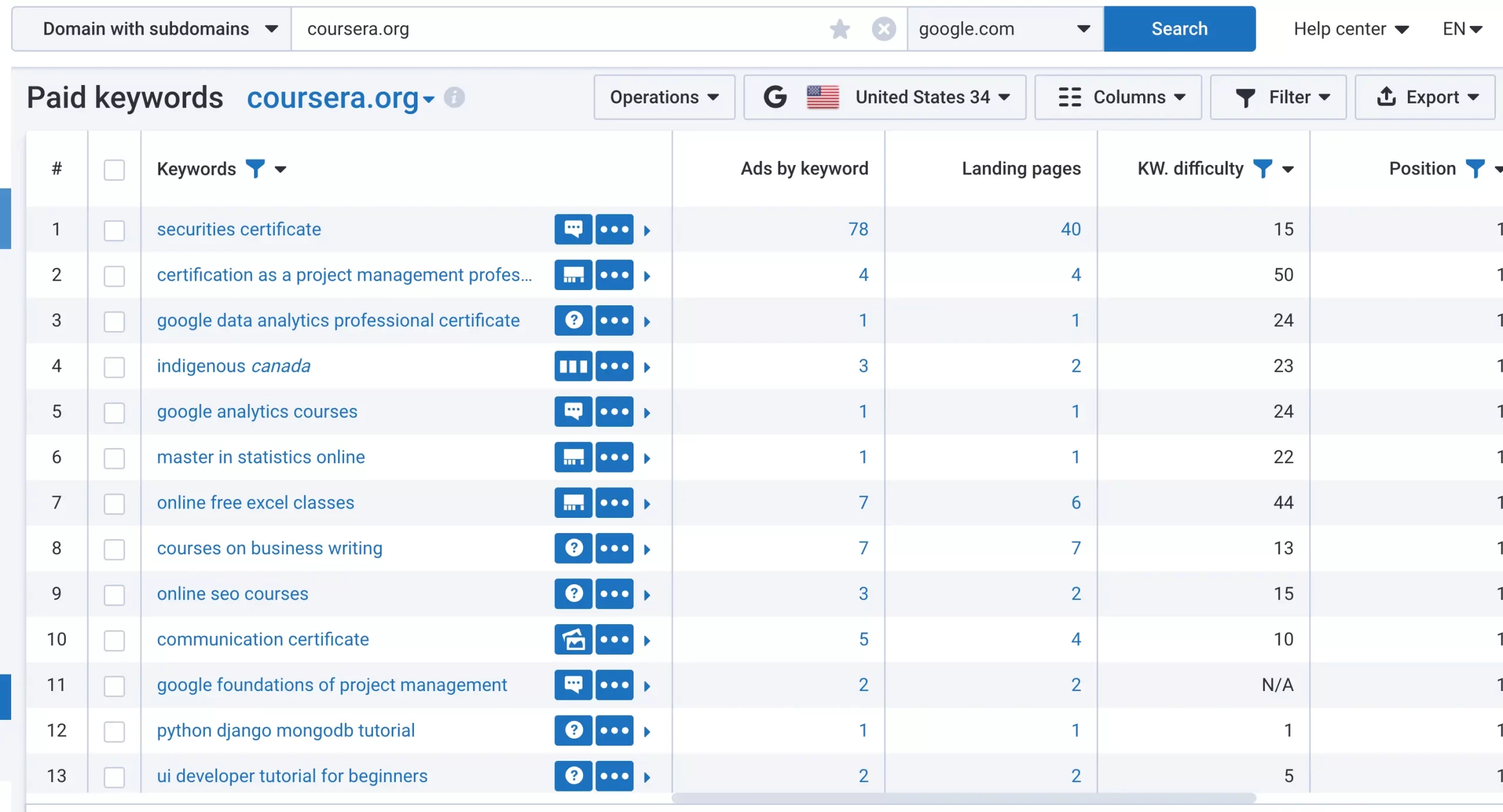
The Competitors option, shows you all the PPC competitors for the particular URL.
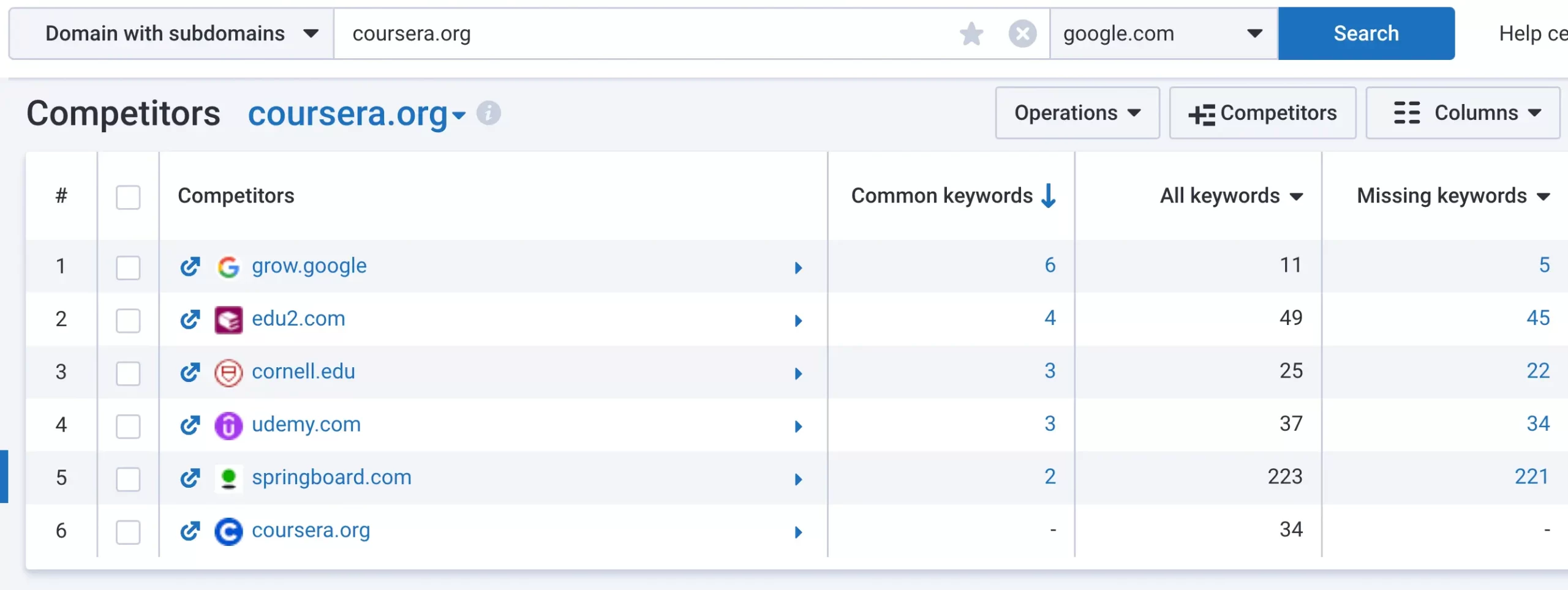
Clicking the Ads Example, option will show you the actual ad copy used in the campaigns.
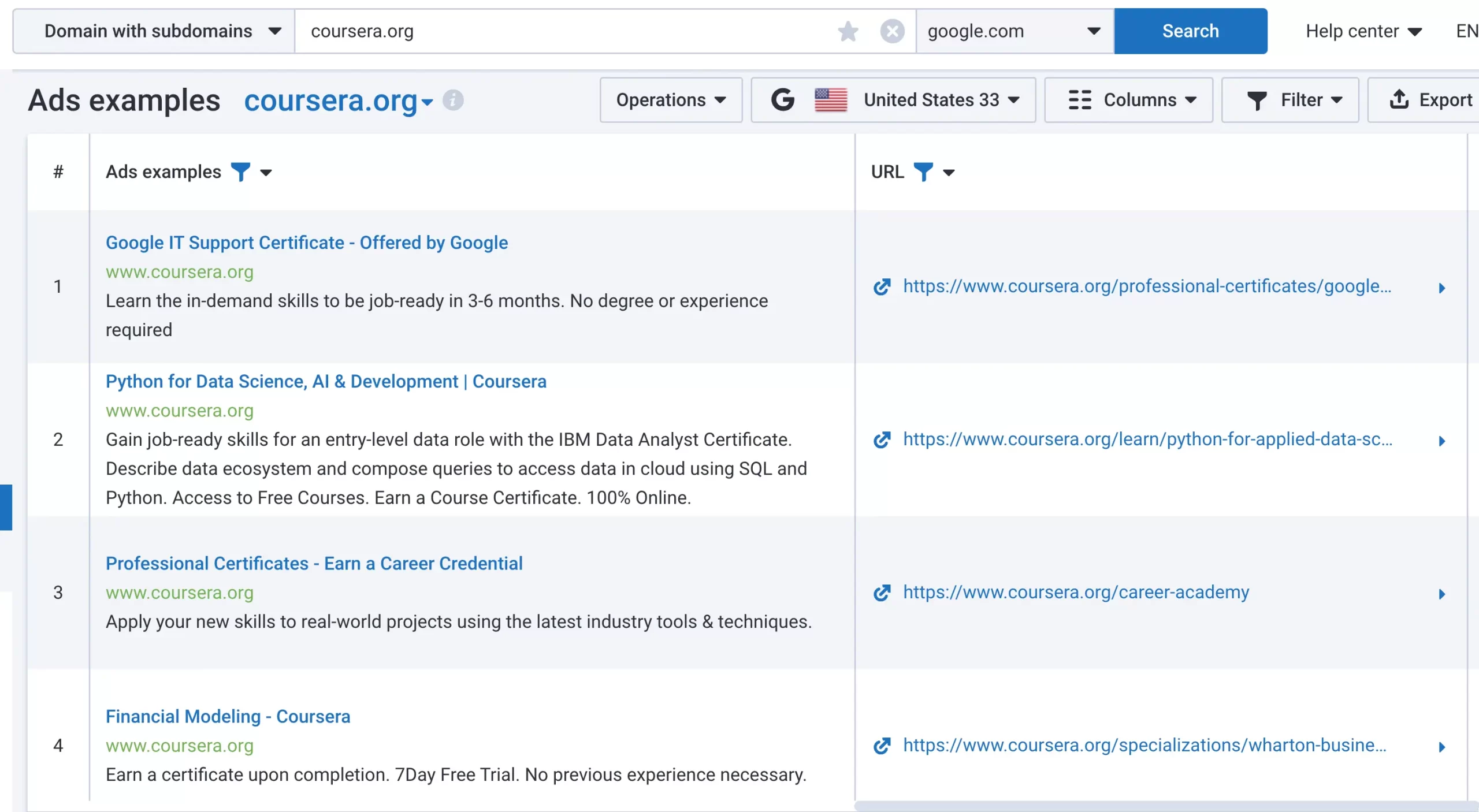
Selecting the Ads Landing Pages will show you the most popular pages visited when ads are clicked.
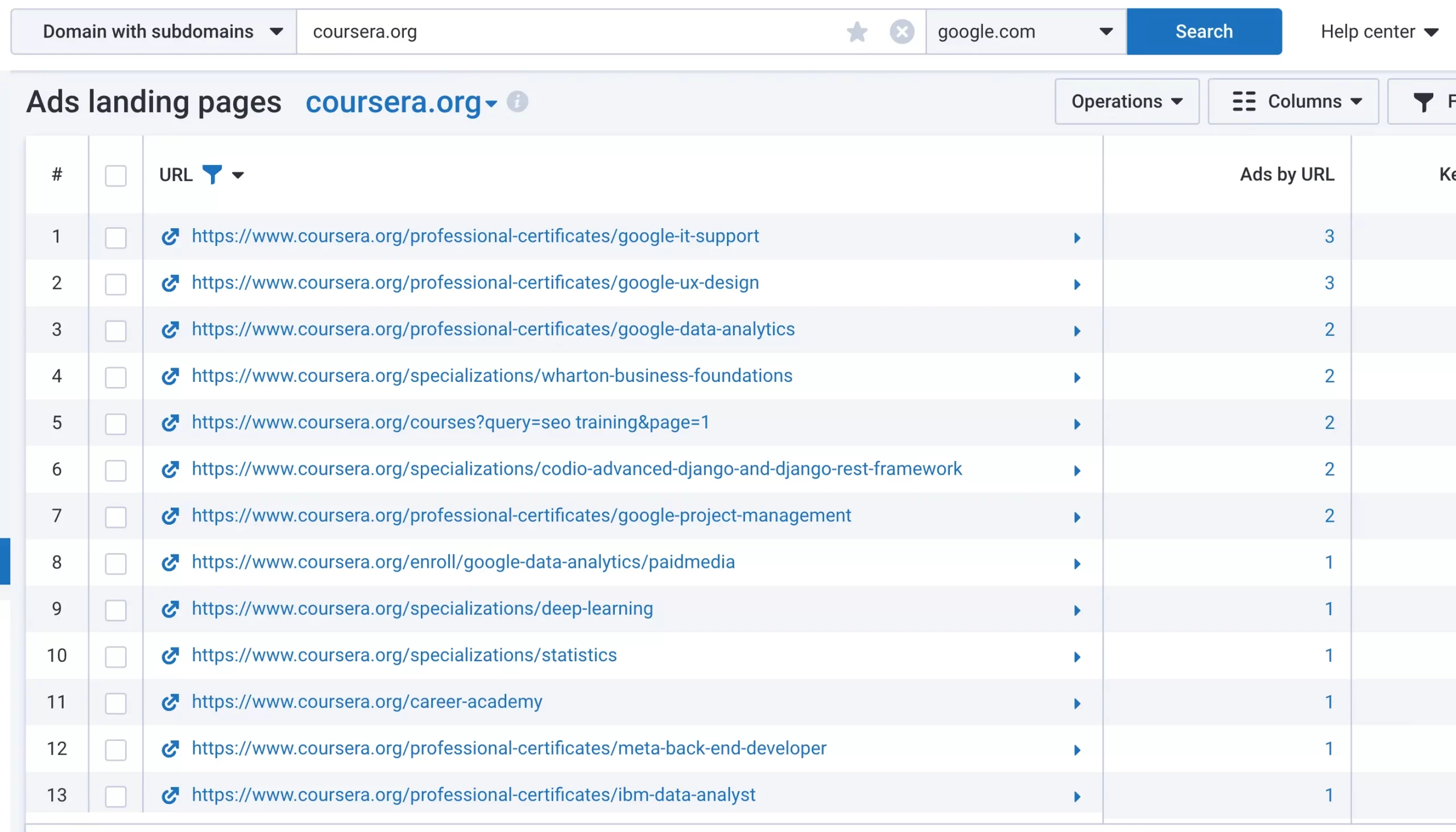
As you can see above, both Semrush and Serpstat and great tools for getting a very good idea of the campaigns your competitors are running on Google Ads.
3. How to Find Your Competitor’s Facebook Ads
One of the free tools you can use to see your competitor’s Facebook ads is the Facebook Ad Library.
With the library, you can search all the ads currently running across Facebook, Instagram, and other Meta products.
You can search for an ad using keywords or an advertiser. You can also view the results by country.
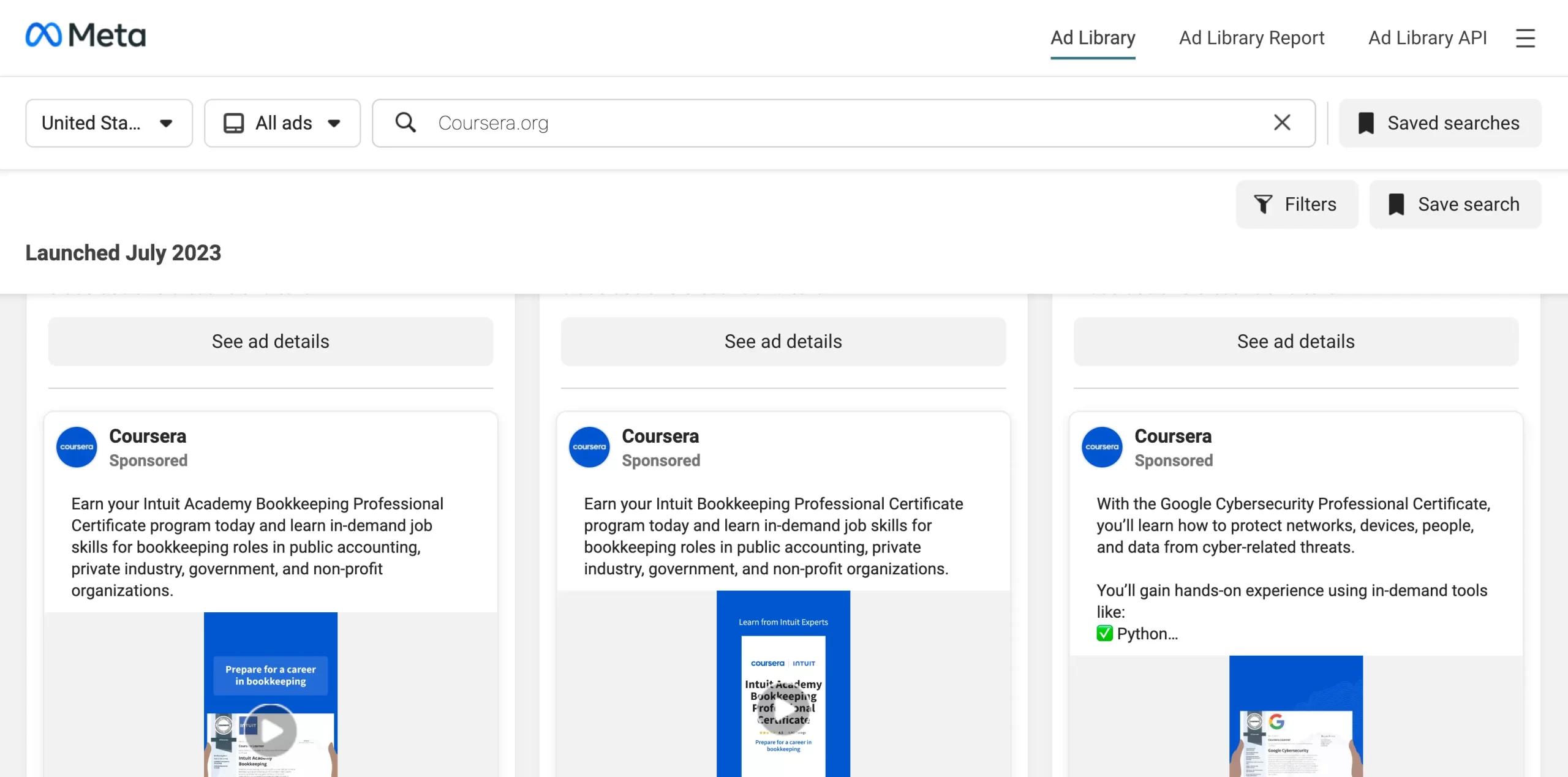
Clicking on the See ad details button will give you more details about the specific ad campaign.
The information is not as rich as provided by AdClarity and other paid tools, but it can give you an overview of what kind of ads your competitors run on Facebook, Instagram, and the Meta network.
4. How To Find Your Competitor’s TikTok Ads
One of the free tools you can use to see your competitor’s ads on TikTok is the TikTok Ads Library.
In the library, you can search for the top-performing ads on TikTok using different filters.
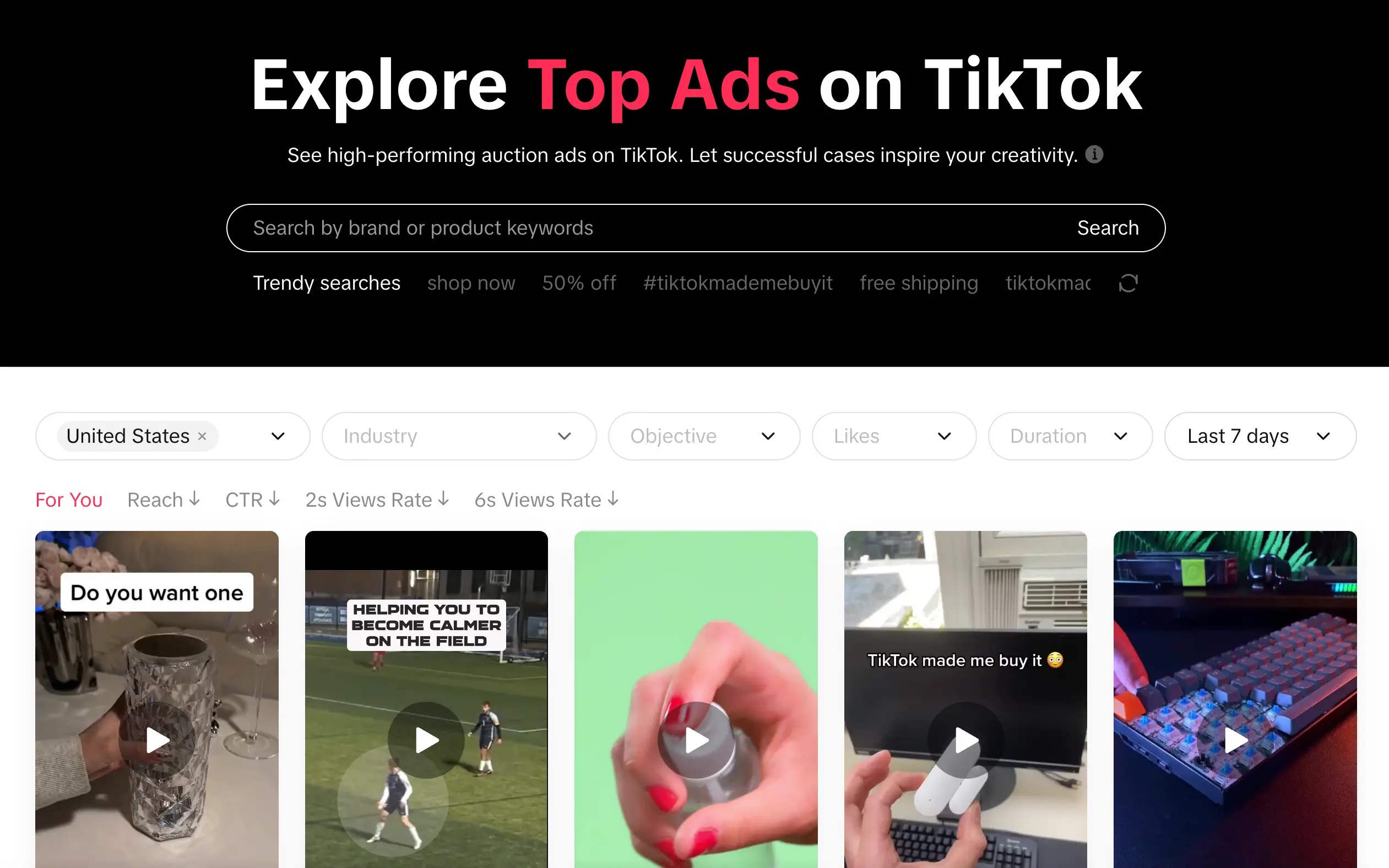
To access the library you need to sign up for a TikTok Business Account (It’s free).
While this is a good tool to get inspired by successful ads, it does not show all ads but only those that are authorized by the advertiser.
This means that some ads might be missing because they were not allowed by the advertisers to be searchable in the library.
When evaluating competitor TikTok ads take a closer look at engagement metrics as they are a good way to measure the effectiveness of an ad.
By studying the likes, comments, shares, and views on competitor's ads, you can identify what kind of content are leading to higher engagement.
Furthermore, going through comment sections can provide a wealth of qualitative data on audience perception and their reaction to the ads.
5. Tips For A Successful Competitor Ad Analysis
Regardless of the tools or methods you use to perform a paid ads competitor analysis, you can follow our proven tips below to make your research more effective.
Set Clear Objectives: Before diving in, clarify what you hope to achieve with your analysis. Are you looking to improve your ad copy, find a new audience, or understand competitors' strategies?
Make sure that your objectives are clear, otherwise, you may end up losing valuable time going through tens of advertising campaigns out of curiosity and without having a clear business purpose.
Broaden Your Search: Don’t just focus on your closest competitors. Sometimes, businesses in related industries or emerging companies can provide fresh insights.
All the tools demonstrated above, allow you to search for ads using keywords or industry, making it easier to expand your search beyond your closest competitors.
Look Beyond the Ads: Finding your competitor’s ads is a great first step, but that's not the end of the story. To understand your competitor's marketing strategy, you need to analyze the landing pages associated with the ads.
This can provide insights into their overall marketing funnel and the kind of user experience they're offering.
Spot the Winners: While performing your research, if you notice the same ad appearing frequently, it's likely performing well for the competitor. This can hint at what messaging or visuals resonate with audiences.
Take Note of A/B Testing: Competitors might run slightly different versions of the same ad. Observing these variations can provide insights into what they're testing and optimizing for.
Examine Ad Timing: When are your competitors running their ads? Certain times or seasons might be more lucrative than others.
Study, Learn But Do Not Copy: While it’s tempting to copy successful ads, always use the information for inspiration and not duplication. Originality often pays off more than imitation.
Create an Action Plan: Competitor analysis without an action plan is useless. Regularly update your advertising strategies based on what you learn from your competitor analysis.
Remember, the goal of competitor ad analysis isn't just to see what others are doing, but to find gaps in your own strategy, get inspired, and ultimately create more effective advertising campaigns.
Conclusion
In the ever-evolving digital marketing landscape, keeping an eye on your competitors' advertising campaigns is not just a strategy—it's a necessity.
By understanding their paid ads campaigns, you gain invaluable insights into market trends, audience preferences, and emerging advertising techniques.
Utilizing competitor analysis tools such as Semrush’s App Center’s Advertising Intelligence App, Serpstat, Facebook Ads Library, and TikTok Library can significantly enhance this process, providing detailed insights and saving time.
However, the true power of competitor ad analysis lies not in mere observation but in effectively harnessing those insights to refine and elevate your own campaigns.
Stay curious, be adaptable, and always strive for originality by drawing inspiration from the market while keeping your brand's unique voice at the forefront.




